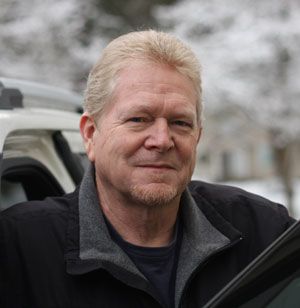Crossing double yellow lines
Double yellow painted lines: We see them on highways, arterials, and city streets. Their main purpose is to separate lanes of traffic travelling in opposite directions. If there are both solid and dashed yellow lines between lanes of traffic, one may not pass if the solid yellow line is on your side. If the dashed line is on your side you may pass when safe to do so. Two solid yellow lines between lanes forbid either side from passing.
Most drivers know all of that. Based on a couple of recent emails, however, all drivers don’t know that those double yellow lines can be crossed legally when making left turns.
For example, reader J.L. wondered, “I was driving east on 29th, and waiting to turn left into the parking lot (not at the intersection, but east of that). A driver stopped in the right lane and yelled at me that I was not allowed to turn left because there was a double yellow line on the street. Was he right? Was I right?”
The driver in the right lane was confusing a simple double yellow lane marking with a “painted median,” which commonly consists of double, double-yellow lines, or a series of angled lines between wide borders, often accompanied by signage stating: Do Not Cross Painted Median. Double yellow lines are not to be routinely crossed either, but it is allowed when making left turns into driveways, alleys and businesses. As noted on page 32 in the Washington Driver Guide: “You may cross [double] yellow lane markings, except medians, to turn left when it is safe.”
The self-appointed explainer-of-the-law J.L encountered was wrong. J.L. also mentioned elsewhere in her note that many drivers make the left turn she described. That doesn’t necessarily make it right, but in this case it is.
The complainer may have been living in the past (over a decade ago), when the Lincoln Heights business district lanes were separated with double, double yellow painted lines, designating a painted median. That has since changed to the current, single pair of double yellow lines, allowing disposition of the prohibitive signage. Ever since the change, it has been perfectly legal to make left turns across those double yellow lines to access adjacent businesses, even though it apparently upsets some drivers.
Maybe an alternate route to that parking lot would be more convenient — at least it might allow one to avoid the wrath of a bold driver angry over a misinformed premise!
Regarding another location, R.S. remarked, “I’ve witnessed drivers headed south on Country Homes Blvd / Ash turn west onto Five Mile then want to make an immediate left / south turn into the parking lot across double yellow lines and the two east bound lanes of Five Mile Rd. If they’d gone another 50' past the intersection, they could turn into the lot! …this causes problems for other drivers trying to go west on Five Mile Rd AND those trying to go east as the ‘courteous’ drivers stop to open a space for these drivers to cross double yellow lines into the parking lot. Often times, drivers in the other lane do not stop and a ‘close call’ occurs as that crossing driver is nearly creamed by the driver not expecting the illegally crossing driver.”
It’s evident that stopping to make a left turn may hold up traffic and even rile some drivers. However, if those left turns involve turning over a single pair of painted double yellow lines, that act alone is not in violation of state law. Again, the Washington Driver Guide specifies that drivers may legally turn across such markings to access or exit driveways, alleys or parking lots “when it is safe.”
One might argue that left turns in the situation R.S. described are not safe, due to traffic, proximity to the intersection, or available alternatives, but turning left across those lines is generally allowed according to the letter of the law. Drivers should consider how their actions affect traffic, but even those who don’t are not necessarily in violation of the rules of the road — just in violation of the rules of common sense!
Readers may contact Bill Love via e-mail at precisiondriving@spokesman.com.
